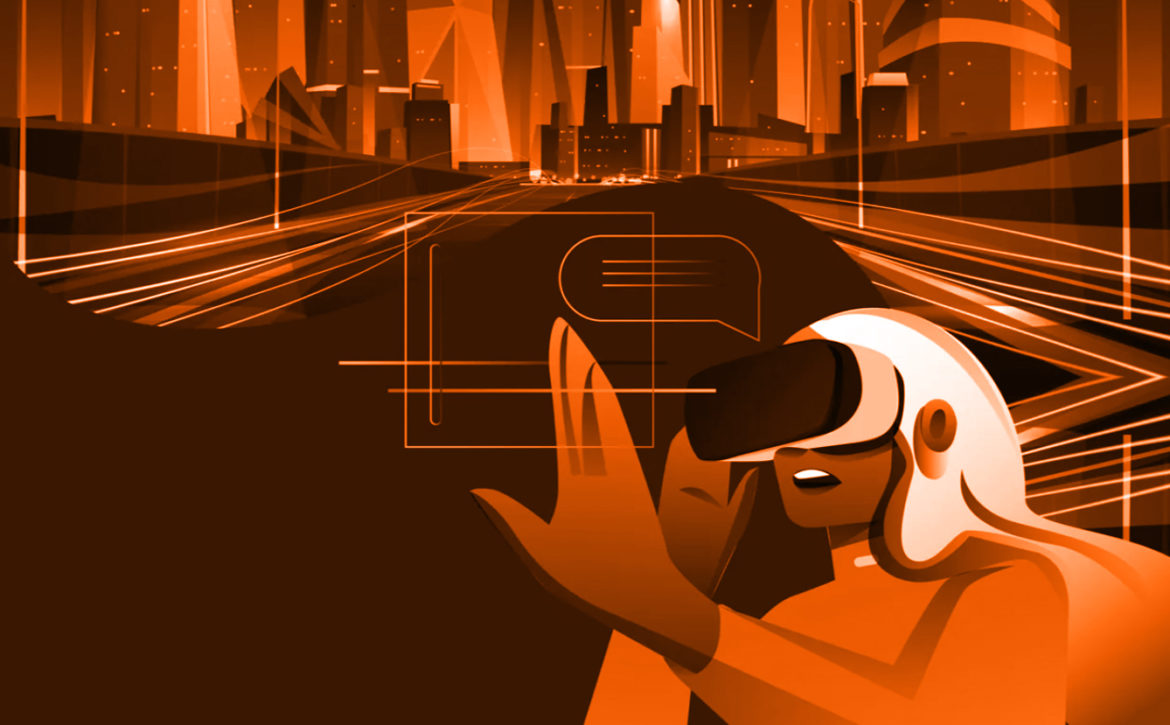A Guide to Everything Metaverse and Gaming
In the past year, one of the most searched for (and least understood) phrases on the internet was ‘metaverse’. This was a result of Facebook – after 17 years of operating under the name – rebranded itself to Meta because Mark Zuckerberg believes the metaverse is the future. Meta has also announced an investment of $10 billion in 2022 and more over the coming years to develop metaverse technologies. In fact, the metaverse is estimated to become an $800 billion market by 2024. The question that comes to mind is, what’s all the hype about?
In this article, we will attempt to understand what the metaverse exactly is, the technologies that play a major role in it, and its future.
What is the Metaverse?
The word “metaverse” came into existence in the 1992 science fiction novel Snow Crash by Neal Stephenson as a combination of “meta” and “universe.” It was Stephenson’s early 1990s vision of how a virtual reality–based internet might evolve and resembled a massively multiplayer online game (MMO) where people controlled virtual avatars. In modern parlance, the metaverse is a network of three-dimensional virtual worlds focused on social connection. It seamlessly blends games, virtual reality, live-streaming, cryptocurrencies, and social media. The gaming world seems to have already adopted the metaverse’s most basic form. We’ll dive into metaverse games a bit later.

The metaverse is a word that is often used in conjunction with Web3 or 3.0 which aims to decentralise the internet. Web3 technology is supposed to give their users the following guarantees:
- Unified identity authentication system
- Decentralized operation network
- Data confirmation and authorization
- Privacy protection and censorship resistance
For this to be possible, there has to be technology that has decentralized storage, immutability, and information encryption.
Technologies That Play a Part in the Metaverse
There’s a lot that you need to create a fully-fledged three-dimensional virtual reality and in the past decade or two, technology has developed a great deal. We can break down the requirements into hardware and software needs. The former includes powerful computers and mobile devices, augmented reality (AR), virtual reality (VR), and their associated peripherals. We have a series of articles where we talk about VR and its evolution in detail if you want to learn more. When it comes to software, there has been no wide-scale adoption of a standardized technical specification for metaverse implementations, and existing implementations rely primarily on proprietary technology. At this juncture, you have multiple platforms that offer experiences in VR and AR which are like the different apps you can download from the App Store. However, there isn’t a single portal that people can use to access the metaverse.
The Role of NFTs and Blockchain Technology
Two terms you would have heard often in conjunction with the metaverse are NFTs and Blockchain. We’ve covered the basic definition of these in our 2022 Gaming Trends article, but to recap, a blockchain is essentially a chain of data blocks on a computer network that is transparent to all of its users as well as anybody else. It cannot be altered or relocated. This way, a complete record of everything that has transpired on the network in relation to the data is preserved. Blockchain gaming is a means of turning digital assets inside video games (such as collectibles or cosmetic skins) into real-world assets in the form of NFTs or non-fungible tokens.
The metaverse is a virtual universe with a lot of possibilities: you could buy a virtual house, get designer clothes, or attend a concert. One of the main features of the metaverse is that it has a full-fledged economy within it and bestrides the boundaries of both the real and the virtual world, so it needs to be decentralised. This means no one person or organisation should own it or control it. Ideally, it should be a distributed peer-to-peer network that uses blockchain technology (because of its aforementioned transparency) to maintain consensus. In the metaverse, creators need to be able to assign value to their digital assets and NFTs are a way of doing so. NFTs will be in charge of pricing their content with proof of ownership.
NFTs are created when a digital file (commonly an image, video, or GIF) is minted. Minting means that a certificate of ownership and originality is generated via cryptocurrency (usually Ethereum) and sold or granted to the new owner. They are also often combined with tangible benefits in the real world, such as Chevrolet auctioning an NFT of a Corvette where the winner of the auction also gets the uniquely colored car in real life (the auction didn’t get any bids, so the benefits can be dubious.) Owning an NFT can also give you access to certain private communities, though the jury is still out on whether it’s worth spending hundreds of thousands of dollars on virtual images of a monkey in a suit, even if celebrities don’t seem to mind.
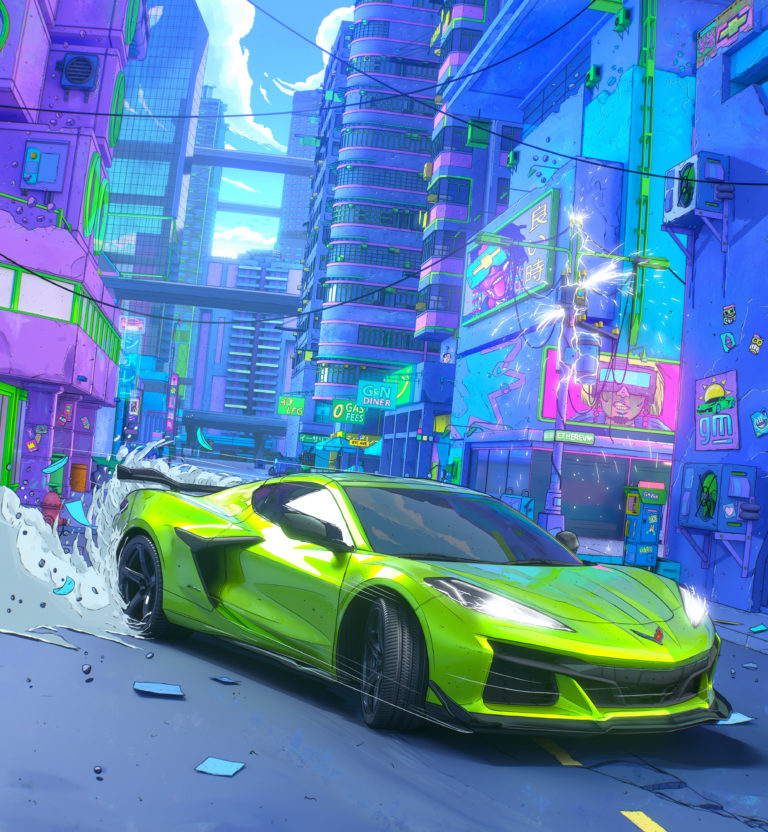
It is important to note that while the words NFTs, blockchain, and metaverse are all often thrown around together, only a handful of companies have already built real solutions in this field that implement NFTs. It is perfectly viable to be a part of the metaverse without using these technologies, and that’s what some of the most popular games do, such as Fortnite. Let’s look at gaming in the metaverse, because it is one of the most popular areas of interest in it.
Games in the Metaverse
Players can invite their social media friends, interact with other players inside the Metaverse, and collaborate to enjoy games together. Metaverse games are also often based on the play-to-earn concept that allows players to win virtual in-game items and sell them to earn real-world money. However, not all metaverse games are NFT-based or play-to-earn.
When it comes to the envisioned future of the internet, the simulation game Second Life is pretty close. You can sleep, eat, shop, and basically enjoy an existence similar to what you would have in real life. Your avatars in the game are how you virtually represent yourself. This was released way back in 2004 and has evolved since then but the concept is the same. In 2006, Roblox was released. Here, you can play games other people have created and spend time in their worlds. It gained massive popularity during the pandemic and was the third highest grossing game in 2020. Recently, a collaboration between Roblox and Gucci created a virtual Gucci Garden space that sold limited edition virtual bags. One of the digital bags even sold for $800 more than the actual version.
In 2015, Decentraland, the first platform to allocate virtual pieces of land via a proof-of-work algorithm, was launched and since then, some of these plots of land have sold for several hundreds of thousands of dollars. You can also find and participate in events like art exhibitions, parties, and the like. Something similar is the Sandbox, the third-largest metaverse based on the Ethereum blockchain. It allows users to create, share, and monetize their assets (like real estate) and gaming experiences.
In 2017, Fortnite released and quickly became a cultural phenomenon. Travis Scott, a famous rapper, hosted a virtual concert in 2020 that was attended by over 12 million people. There are in-game character skins created in collaboration with several famous franchises like Star Wars, Naruto, Marvel, DC Comics, and more.
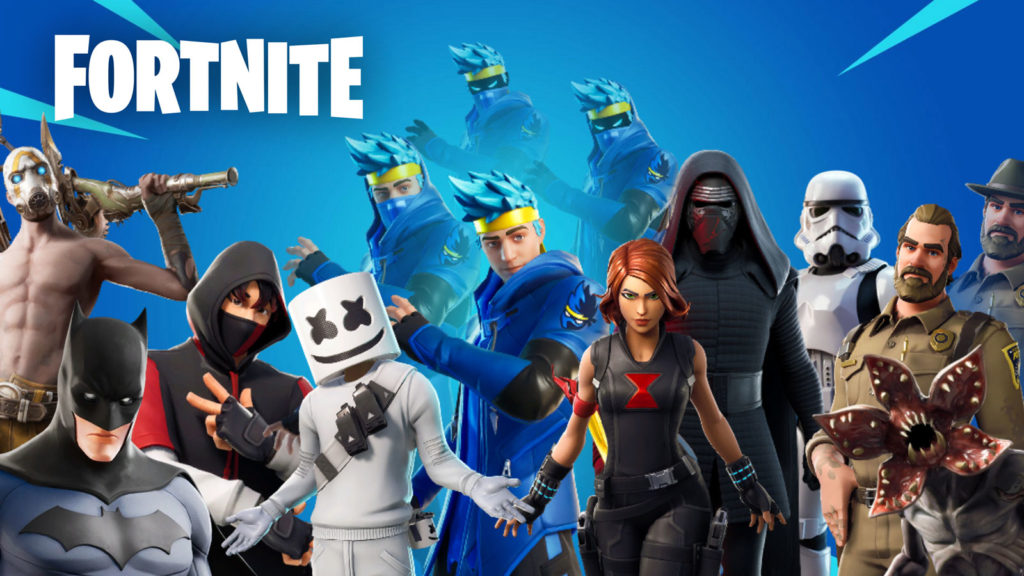
Play-to-earn games have started becoming a phenomenon. In 2017, a game called CryptoBots went public, which was the first play-to-earn NFT game. In 2018, Axie Infinity, a play-to-earn NFT blockchain game, was built on the Ethereum network. During the game, players breed mythical animals and trade them. Your creatures can battle other animals to earn Smooth Love Potion tokens, which can be traded for real money through a cryptocurrency exchange. Axie Infinity has made over $4 billion in NFT sales since its launch. It also shows that there have been 14.45 million transactions and 1.62 million buyers since its inception. However, it has also proven to be vulnerable to hackers, who stole approximately $620 million worth of cryptocurrency from a network used to process in-game transactions. While Axie representatives have stepped up and said that they’re committed to reimbursing players for their losses, the risk remains.
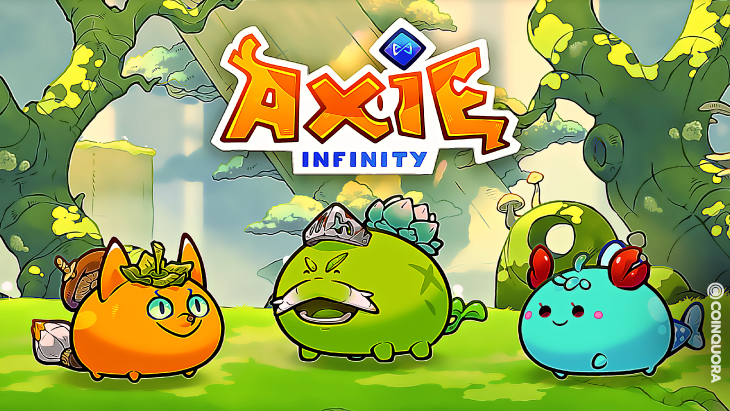
In 2019, Facebook (now Meta) launched a social VR world called Facebook Horizon, now called Horizon Worlds. With the success of AR thanks to Pokémon Go, Swedish lifestyle and furniture behemoth IKEA jumped in on the bandwagon with their innovative Place app, which lets you choose a piece of furniture and see how it looks in your home or office. In 2020, Alien Worlds was released. It involved a multi-metaverse interplanetary scenario that had NFT characters interacting in a decentralized autonomous organization to mine tokens and perform tasks. By 2021, Alien Worlds had more than 2.5 million users.
We can see that games in the metaverse fall into one of the below categories, and are often a mix of multiple categories.
- Social Gaming: These are games in the metaverse where you can meet your friends from real life or make new ones with similar interests. You can even hang out with strangers and meet new folks. One of the first social games was Horizon Worlds by Meta but usually, successful social games are combined with other categories so they’re more fun. Notable examples include Fortnite and Decentraland.
- Games-as-Platforms: Games aren’t just limited to playing Tetris or whatever, they’ve become a whole new lifestyle. You can spend time in them building your own house or games, play other peoples’ creations, and enjoy a diverse, virtual life. Roblox and its many worlds are a great example of games as a platform.
- Mixed Reality Experience: When we talk about mixed reality, we mean not just pure VR games but also augmented reality and any kind of mix between the virtual and the real. Games like Beat Saber (VR) and Pokémon Go (AR) are testaments to how merging the worlds can end up into incredibly fun experiences.
- Play-To-Earn: From a zero-value market size, the blockchain gaming industry grew to $3 billion in 2021 and is projected to rise to $39.7 billion by 2025. Fueled significantly by the play-to-earn model, the blockchain gaming industry has attracted over 1.5 million diverse gamers across the globe. Games such as Axie Infinity have generated several millions in revenue and are used by a multitude of people as a source of revenue.
- Portable Game Assets: This is technically not a game category but is a huge feature that the metaverse would like to ideally have. Being able to buy cool things in a game and reap their benefits in game has been a thing ever since skins for characters and weapons became popular. In the metaverse though, one of the biggest promises is that of portable game assets, where for example, if you own a car in one metaverse, you should be able to take it to the next. There are no universal portable game assets (yet) but in games like Roblox with a huge number of worlds, you can take your virtual belongings around between them.
Gaming in the metaverse is full of potential with a focus on new ways to play, earn, work, and do a lot more.
The Costs and Processes of Populating the Metaverse
However, all this isn’t easy. Currently, it feels like every mention of the metaverse comes with a price. NFTs are either exorbitantly expensive or the fees associated with them are, blockchain games require expensive buy-ins before one can try the gameplay, and owning digital land within a metaverse platform can rival one’s real life rent. Equipment costs can also be high if you want to buy VR gear or more powerful devices to experience the metaverse. While brands and tech companies want consumers to embrace this evolution of the internet experience, it seems increasingly inaccessible to a large portion of the internet’s denizens.
A lack of capital is a hindrance in the metaverse. A writer loaded up Decentraland to try playing a little poker to see how well it worked. In the poker area, they were informed they needed to buy an item of clothing, which acts like a membership card to play. The price for the cheapest item, a pair of glasses, was 1.948 ETH, around $5,588.19 then. Compare this to informal poker buy-ins in real life. According to Fortune, the metaverse platforms Sandbox and Decentraland are selling the smallest chunks of land for 3.7 and 3.46 eth respectively, which was around $14,099 and $13,211 at the time.
A lot of people turn to the internet as a place of affordable entertainment. The metaverse so far though seems to cause more roadblocks to this sentiment than aid it.
The Positives of the Metaverse
It isn’t all doom and gloom though. The metaverse, even in its current avatar, brings a host of benefits to the table. These include:
- Better social connections irrespective of physical proximity:
You can stay in touch with your friends and find new people who have the same interests as you relatively easily. Gaming worlds like Roblox excel at this as you can find a game within it you and your friends like and hang out in that world with them, just like going to a park together. - Immersiveness:
You can enjoy games and experiences online with additional dimensions, with new haptic suits and gloves even simulating physical interactions. The critically acclaimed Half-Life Alyx takes interactions in VR to a new level: you have to physically duck for cover or reload a gun by taking the magazine out and reinserting it.
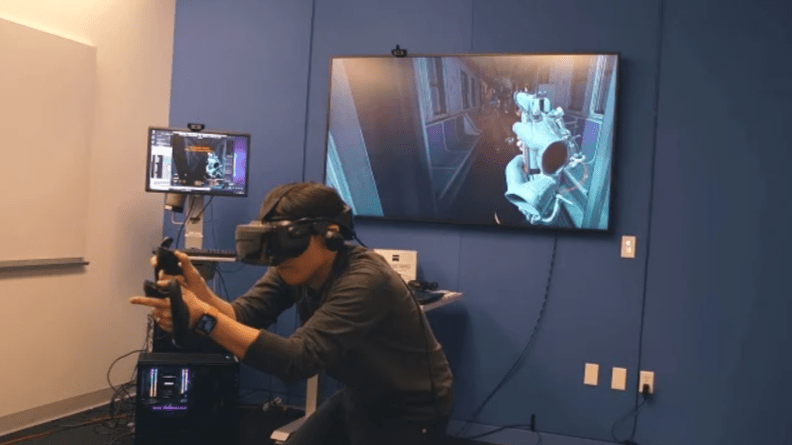
- New business opportunities:
Whether it’s NFTs being sold, virtual brand deals and concerts, or even digital real estate, the metaverse is a great place to try and make money. The risk might be high but the rewards can be astronomical. Games like Axie Infinity have proven to be ways for players to supplement their income or even play the game for a living and places like the Philippines account for 35 percent of Axie Infinity traffic and the biggest share of its 2.5 million daily active users. - Games have drastically improved:
With VR being increasingly realistic and affordable, far more VR games have been released and companies like Epic are betting on gaming and the metaverse. They put in $1 billion into metaverse gaming in early 2021. These investments into the gaming industry are sure to bear fruit, either in the form of new and innovative games, or other supporting technology such as VR. Meta is certainly focusing significantly on the latter. - Online education and work:
One thing during Covid was how several schools and universities around the world switched to platforms like Zoom to ensure their students would be able to continue learning. Further, imagine learning with the help of immersion. If you want to teach geography, wouldn’t a virtual tour of the world be better than just staring at an atlas? Gamification of academics is a great way to encourage learning and metaverse gaming is a great way to do that. Companies are also looking more favorably on remote work and the virtual office is looking increasingly likely.
Challenges the Metaverse Faces
There are a lot of problems to solve before the metaverse can really thrive though. While we’ve looked at the benefits, the drawbacks should also be considered.
- Social issues:
While the metaverse might not be affected by physical distances, it can definitely lead to a loss of connection with the real world. Internet addiction disorder, social media, and video game addiction can have mental and physical repercussions over a prolonged period of time, such as depression, anxiety, and an increased risk for obesity and cardiovascular disease thanks to a sedentary lifestyle. - Cybercrime:
Existing online platforms and games are vulnerable to all sorts of illegal activities, such as fraud, money laundering, child exploitation, illegal goods, services trafficking, and cyberattacks. The metaverse is no different, with several large-scale scams already proving to be an issue. The lack of moderation and proper guidelines and comprehensive laws can lead to major criminal activity. User safety is also a concern, as there is no easy way to verify age, gender, and the like without possible privacy violations. - Personal Data Security:
Users will probably have their information collected on an even greater scale now as a result of interactions in the metaverse as well as possible biometric data through VR and AR devices. Companies like Meta also plan on having targeted adverts within their metaverse, which might lead to more exploitation and manipulation of individuals. - Feasibility and accessibility:
A true metaverse as portrayed in fiction such as Ready Player One and Snow Crash might not be feasible with today’s technology – both in terms of hardware and software. Furthermore, the technology currently available often is extremely expensive. Virtual spaces might also have too high an entry cost for a lot of people and this might prove to be prohibitive. - Lack of Interoperability.
Currently, it’s nigh on impossible to take virtual items like cars or real estate from one metaverse to another. Legal and commercial challenges are also a major issue, with no real adjudicator available on the scene yet.
Current Investments in the Gaming Metaverse
Like we mentioned at the onset of this article, the metaverse is estimated to become an $800 billion market by 2024. That’s up from almost $500 billion in 2020.
In October 2021, Tencent established the F1 studio under the subsidiary TiMi Studio Group for focusing on metaverse development. Meta has also announced investment of billions of dollars over the coming years to develop metaverse technologies. The tech giant has also invested up to $10 billion in acquiring VR technology and has plans to invest in AR technology to build out their virtual world capabilities. With their plans expected to take up to 15 years, they’re in this for the long haul. Google has also discussed the possibility of mapping the Metaverse and implementing current services such as YouTube into virtual worlds. They have also invested a hefty $39.5 million into a fund that invests directly into Metaverse projects.
In June 2021, Epic Games said that it has secured $2 billion in its latest round of investments in its quest to create the metaverse, a realm of interconnected virtual worlds like those depicted in novels like Snow Crash and Ready Player One. Disney is developing a metaverse theme park. Nike has a virtual store within the Roblox Metaverse called Nikeland, which has attracted over 7 million people from over 200 countries. They’re currently selling their Nike branded virtual sneakers for over $100,000.
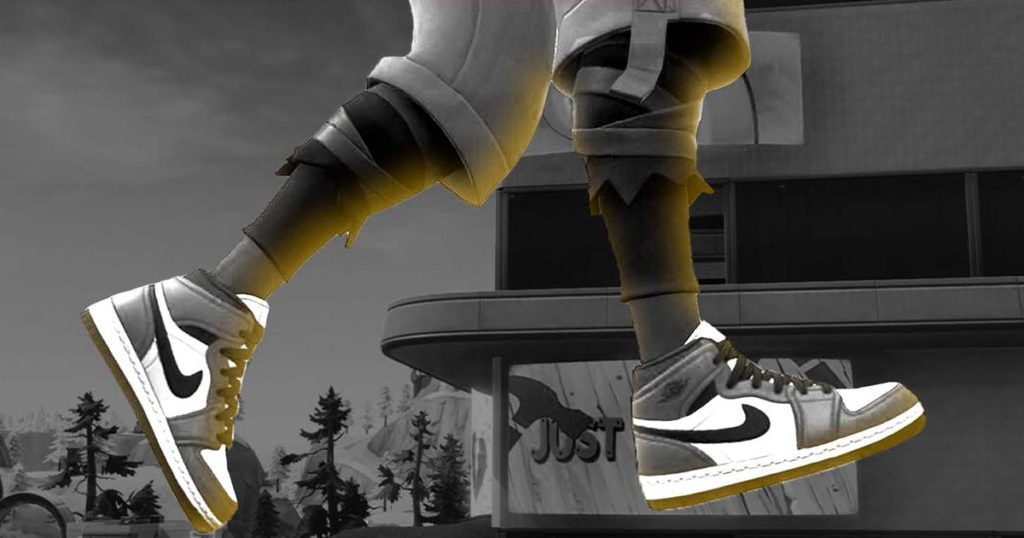
Even dating apps like Tinder are getting in on the action, with their new concept on a few college campuses in South Korea that allows users to meet in an area called Singletown and interact as avatars using real-time audio. The company is also rolling out its own coins — Tinder Coins — which are currently being tested in several markets, including a few markets in Europe.
What the Future of the Metaverse Looks Like
If the metaverse can be decentralised, safe, and accessible, it is possible that it will be as commonplace as the internet is today. AR, VR, and other technologies are propelling the metaverse forward and evolving along with it. Future technologies and players that will enhance metaverse capabilities have yet to emerge. The power and reach of the metaverse can potentially eliminate many of the constraints and biases of today’s reality.
The future of the metaverse is uncertain, but only as to how exactly it will look. With major investments being pumped into it by global titans such as Google and Meta, it is likely that the combination of digital worlds, virtual assets, and how they shape our social experiences and affect our economy will be of extreme significance. Gaming in the metaverse in particular is breaking barriers with increasing speed and soon, we might be able to play games in the metaverse and enjoy them like a real-life experience.
Gameopedia works with clients across the industry on custom requests and can provide in-depth data about metaverse-related games. Reach out to us for data that can empower you to new heights.

